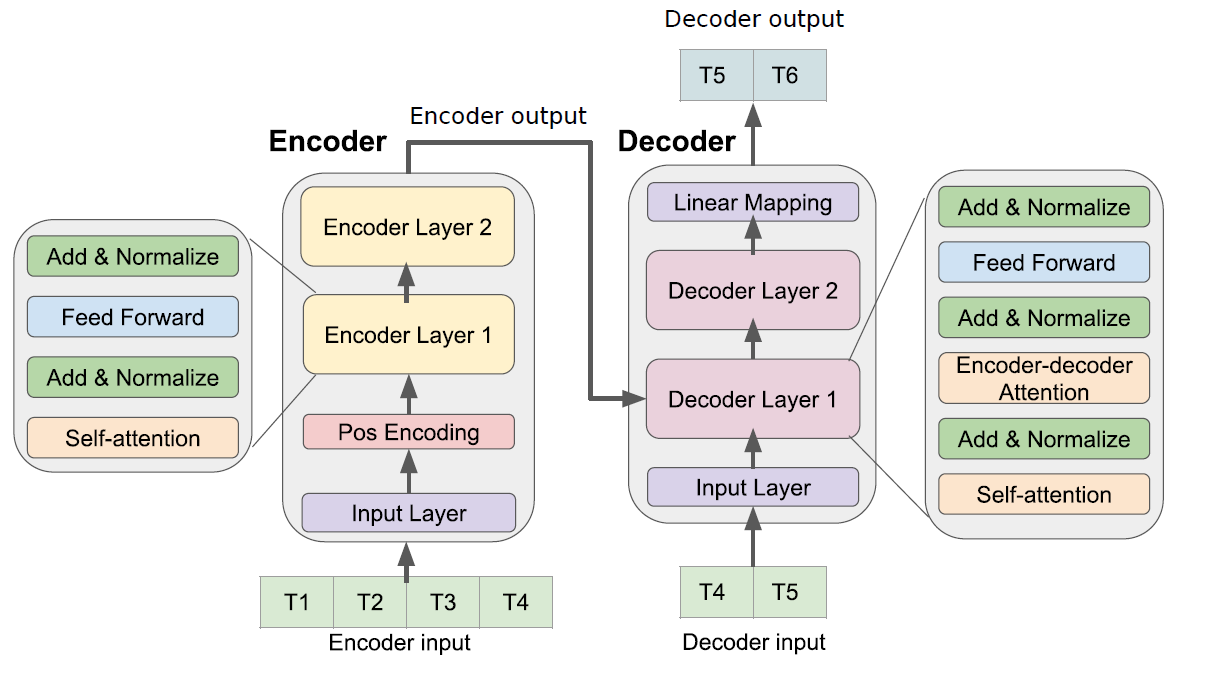Deep Transformer Models for Time Series Forecasting ; The Influenza Prevalence Case (2020, 97)
Contents
- Abstract
- Introduction
- Background
- State Space Models (SSM)
- Model
- Problem Definition
- Transformer Model
- Training
0. Abstract
Transformer-based model ( self-attention )
for UNIVARIATE & MULTIVARIATE TS
1. Introduction
Statistical & ML
- AR / ARMA / ARIMA
DL approaches
- CNN / RNN based
- Transformer architecture
- does not process data in “ordered sequence manner”
- have potential to model “complex dynamics of TS data”
Contributions
- 1) develop general Transformer-based model for TS forecasting
- 2) complementary to state space models
- can also model “state variable” & “phase space”
2. Background
(1) State Space Models (SSM)
state & observable variables
- ex) generalized linear SSM
- \(\begin{aligned} x_{t} &=Z_{t} \alpha_{t}+\epsilon_{t} \\ \alpha_{t+1} &=T_{t} \alpha_{t}+R_{t} \eta_{t}, t=1, \ldots, n, \end{aligned}\).
3. Model
(1) Problem Definition
\(N\) weekly data points : \(x_{t-N+1}, \ldots, x_{t-1}, x_{t}\)
- input : \(x_{t-N+1}, \ldots, x_{t-M}\)
-
output : \(x_{t-M+1}, x_{t-M+2}, \ldots, x_{t}\)
- each data point \(x_t\) : scalar / vector ( univariate / multivariate )
(2) Transformer Model

(3) Training
train the model…
- to predict 4 future
- with 10 data points
That is..
- encoder input : \(\left(x_{1}, x_{2}, \ldots, x_{10}\right)\)
- decoder input : \(\left(x_{10}, \ldots, x_{13}\right)\)
- decoder output aims : \(\left(x_{11}, \ldots, x_{14}\right)\)
